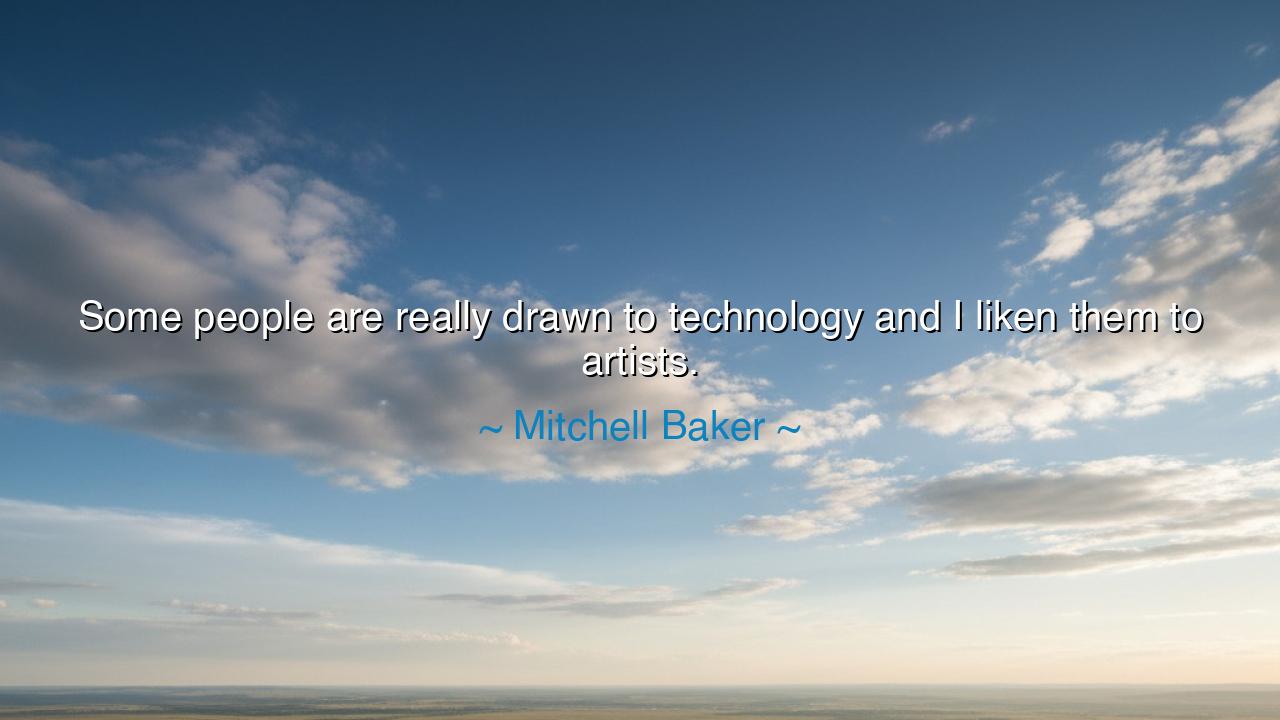
Some people are really drawn to technology and I liken them to






Hear the words of Mitchell Baker, spoken with insight into the soul of creation: “Some people are really drawn to technology and I liken them to artists.” This is no shallow comparison, but a truth that reaches into the very heart of human endeavor. For both the artist and the technologist are kindled by vision, stirred by curiosity, and compelled to shape the unseen into form. The brush and the keyboard, the chisel and the circuit, the canvas and the code—each is a tool of expression, and in each case, the hand that wields it reveals the inner world of the creator.
When Baker likens lovers of technology to artists, she reminds us that technology is not only about wires, engines, or algorithms. It is about imagination—the ability to see what is not yet, and to bring it forth into being. The technologist, like the painter, gazes into the void and asks, What if? And from this question arise new worlds: machines that fly, voices carried across oceans, universes conjured in digital space. Just as the artist paints a vision onto canvas, the technologist writes a vision into reality itself.
History testifies to this union. Consider Leonardo da Vinci, whose mind was both artist and engineer. His sketches of flying machines were not merely blueprints but works of art, fusing the elegance of beauty with the rigor of invention. Or think of Ada Lovelace, who looked upon Charles Babbage’s machine and saw not only numbers, but poetry woven into calculation—the first whispers of programming. These figures prove that the boundary between art and technology is thin, for both spring from the same fountain of creativity.
The words of Baker also reveal a deeper truth about passion. Those who are “really drawn” to something—be it music, painting, or coding—do not approach it as mere labor. They approach it as lovers approach the beloved, with devotion, curiosity, and reverence. To them, technology is not cold machinery but living possibility. Just as the sculptor feels the shape hidden within the marble, so the technologist feels the potential hidden within circuits and code. In both cases, the work becomes not drudgery but art, not function alone but expression.
And yet, let us not mistake artistry for ease. Both the artist and the technologist labor long in obscurity, failing often, refining constantly. The painter’s canvas fills with discarded sketches, the coder’s screen with broken programs. But through perseverance, beauty emerges. Consider the tale of Thomas Edison, who failed a thousand times before creating the light bulb. His work, though technical, was no less artistic in its persistence and vision. For artistry lies not only in beauty, but in the relentless pursuit of bringing forth what one has imagined.
The lesson for us, O children of tomorrow, is clear: whatever your craft, treat it as art. Do not see technology as sterile or soulless; see it as a canvas upon which you may express creativity. Likewise, do not see art as divorced from reason; see in it the structure and discipline that all creation demands. For the world needs both—the dreamer and the builder, the artist and the technologist, and often they are one and the same.
Practically, this means approaching your work with vision and reverence. If you build, build beautifully. If you code, let your logic carry elegance as well as function. If you paint, do not shun the tools of progress, for they too may extend your reach. In every field, let imagination and craft walk hand in hand. In this way, you will not merely produce, but create; not merely labor, but inspire.
Thus Mitchell Baker’s words endure as wisdom: those drawn to technology are kindred to artists, for both are servants of vision, seekers of possibility, and creators of worlds. Honor this truth, and let your own life become a canvas upon which patience, passion, and imagination are painted for generations yet unborn.






AAdministratorAdministrator
Welcome, honored guests. Please leave a comment, we will respond soon